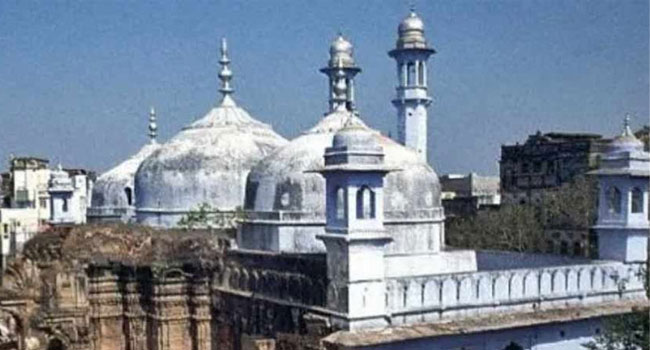The Archaeological Survey of India (ASI) has been granted permission to conduct a review at the Knowledgeable Mosque in the Varanasi district of Uttar Pradesh, India, by the Varanasi District Court. The court has rejected the application made by the ‘Anjuman Intezamia (Knowledgeable) Mosque Committee’ to halt the review within the mosque premises.
However, the controversy regarding the alleged “Shivalinga” and the disputed area will not be subject to any review for now, as per the directions issued by the Varanasi District Court on July 21. The judge has stated that a hearing on the application filed by the Hindu party will take place on October 5th.
In summary, the ASI has received permission to conduct a review at the Knowledgeable Mosque in Varanasi, Uttar Pradesh, but the dispute over the “Shivalinga” and the contentious area will be addressed in a future hearing scheduled for October 5th.
Justice Ajay Kumar Vishwakarma of the Allahabad High Court has allowed the Archaeological Survey of India (ASI) to proceed with its examination, including carbon dating, of the samples obtained from the Knowledgeable Mosque in Varanasi, Uttar Pradesh, India. Notably, this decision follows the previous directive issued by the Varanasi District Court on July 21, where Judge Ajay Kumar Vishwakarma instructed the ASI to conduct a “scientific examination” within the mosque premises. However, there will be no examination of the disputed “Shivalinga” and the alleged “seal” in the contested area as per the Varanasi District Court’s directions.
The examination is being carried out in response to an application filed by the Hindu side, seeking “evidence of Hinduism” within the mosque compound. The court had initially stayed the ASI’s review based on the application filed by the Knowledgeable Mosque Committee. However, on August 3, the chief justice bench led by Justice DY Chandrachud of the Supreme Court overruled that order. The Varanasi District Court has stated that the review will continue under the supervision of Justice Vishwakarma.
The Muslim side’s application had argued that the 1991 Places of Worship (Special Provisions) Act and the 1995 Central Wakf Act did not allow for a review in the case of the Knowledgeable Mosque since it has remained unchanged since 1947. However, the Hindu side’s legal representatives, Vishnu Jain and Harishankar Jain, contended that the 1991 law did not apply to the Knowledgeable Mosque in terms of evidence. They argued that even after 1947, the character of the religious site in Shringar Gauri Sthan had remained the same. Justice Vishwakarma had dismissed the Muslim side’s objections and stated that the 1991 law did not specify that the character of the religious site could not be determined.
In summary, the ASI has been granted permission to conduct an examination within the Knowledgeable Mosque in Varanasi, Uttar Pradesh, as part of the ongoing legal proceedings, but the examination of the disputed “Shivalinga” and “seal” will not take place at this time. The case will continue to be heard in court.
In August 2021, five Hindu women filed a case seeking permission for worship at the “Maa Shringar Gauri” (Ozukhana and Tahkhana) within the mosque and claimed the existence of a goddess idol on the western wall inside the mosque. This led to a request for carbon dating of the obtained samples, which was submitted on September 22, 2021.
Following the completion of the examination and video documentation, the Varanasi District Court, as per the Supreme Court’s directive in May 2022, began hearing the case. In the report from the supervisory team’s video documentation, a structure resembling a Shivalinga was found in the mosque’s Ozukhana, which has been contested by the Muslim side. On the other hand, the Hindu side had submitted an application for carbon dating of the obtained samples. However, there is still some uncertainty among experts regarding the use of carbon dating to determine the age of the Shivalinga-like structure. They explain that while carbon dating can determine the age of deceased organisms or plant ash, it is challenging to use this method to determine the age of ancient stones or architectural components, unless there are ancient organic remains on the structure’s surface.
Source: Anandabazar Patrika.

